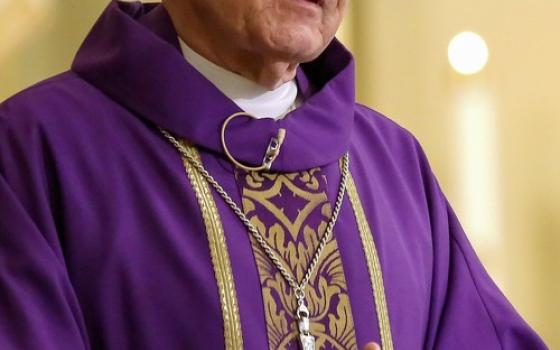WASHINGTON -- It is "critical to build safety barriers around children and young people to keep them from harm," said Teresa M. Kettelkamp, executive director of the Secretariat of Child and Youth Protection at the U.S. Conference of Catholic Bishops in Washington.
The barriers she had in mind take the form of "protective guardians, codes of conduct, background evaluations, policies and procedures, and safety training programs" aimed at preventing sexual abuse of minors.
In a discussion of safe environment programs, Kettelkamp posted 10 child-protection points on her office's website. A report released May 18 in Washington on a major study of the causes and context of the sexual abuse of minors in the church accented the value of safe environment programs.
"No one has the right to have access to children," Kettelkamp said. She insisted that "background checks work," keeping "predators away from children" in churches, schools and other organizations.
The U.S. bishops' 2002 "Charter for the Protection of Children and Young People" created Kettelkamp's office. It staffs the bishops' Committee for the Protection of Children and Young People. Helping dioceses implement safe environment programs is a key priority.
Safe environment programs should make clear to everyone in the community "the standards of conduct for clergy and other persons in positions of trust with regard to sexual abuse," the charter said.
The programs equip children, youths, parents, ministers, educators, volunteers and others to recognize the warning signs and grooming techniques of potential sexual abusers. For example, Kettelkamp said:
- Some seek "age-inappropriate relationships" and are "more comfortable with children than fellow adults."
- Some abusers give potential victims "undue attention or lavish gifts."
- Some allow "young people to participate in activities" their parents would disapprove of, such as viewing pornography or consuming alcohol.
Today, safe environment programs exist in the vast majority of U.S. dioceses. Diocesan websites commonly provide an easy-to-spot link to the local church's program.
At a May 18 news conference, Bishop Blase J. Cupich of Spokane, Wash., chairman of the USCCB Committee on Protection of Children and Young People, said the report shows that in terms of safe environment programs, "what we are doing works."
"Our children know to run away and to speak up when someone or something makes them feel uncomfortable," he said. "Protection of children is now a regular part of every church ministry and service."
Bishop Cupich said more than 5.3 million children and more than 2 million "adults who serve the church through our schools, churches and youth groups" have received safe environment training to date.
Editor's Note: The full text of the John Jay report is now available as a pdf file: Causes and Context of Sexual Abuse of Minors by Catholic Priests in the United States, 1950-2010
For more coverage of the John Jay report, see:
- Bishops at center of abuse scandal, and potential reform, RNS, May 18
- Report spreads blame for Catholic sex abuse, RNS, May 17
- Diocesan programs help build 'safety barriers' against child abusers, CNS, May 18 2011
- No room for complacency in protecting children from abuse, bishop says, CNS, May 18 2011
- US bishops say new John Jay report on abuse key to understanding issue, CNS, May 18 2011
- Key quotes from National Review Board's 'causes and context' report, CNS, May 17 2011
- Key events in US church response to clergy sex abuse crisis, CNS, May 17 2011
- Bishops' child protection officer looks to church's next steps on abuse, CNS, May 17 2011
- Misperceptions of abuse problem common, John Jay report says, CNS, May 17 2011
- Major recommendations from 'causes and context' report on abuse, CNS, May 17 2011
- Causes and context report released on clergy sexual abuse of minors, CNS, May 17 2011



